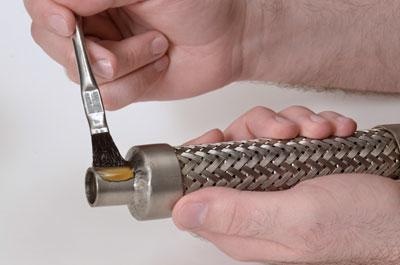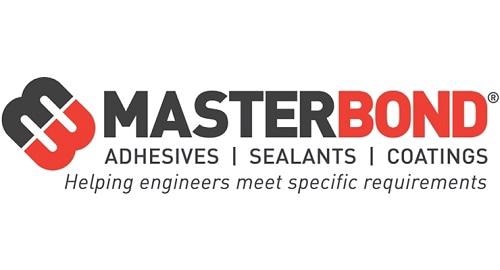Master Bond one and two component structural adhesives offer remarkable bond strength to similar and dissimilar substrates.
Toughened, two component, room temperature curing epoxy EP21TDCHT has a convenient one to one mix ratio. Cure speed can be accelerated by the use of heat. EP21TDCHT features high physical strength properties, superior durability and chemical resistance. T-peel strength is 30 pli and tensile strength is > 3,500 psi. Elongation after cure is > 20% and Shore D hardness is > 60. Tensile modulus is 175,000 psi. Service operating temperature for this compound is -100°F to +350°F.
Master Bond EP21TDCHT has superb electrical insulation properties. Volume resistivity is 1014 ohm cm. Adhesion to similar and dissimilar substrates is excellent. It is particularly well suited for bonding substrates with different coefficients of expansion and contraction. Bonds can withstand exposure to thermal cycling and mechanical vibration, impact and shock.

EP21TDCHT is easy to apply and spreads smoothly after mixing. It has a working life of 90-100 minutes for a 100 gram mass. 85% of its maximum bond strength is developed within 48 hours. It has a 6 month minimum shelf life in original unopened container. It is available for use in pint, quart, gallon and 5 gallon container kits. It is also packaged in convenient gun applicators and flexible divider pouches.
Adhesive Systems for Structural Bonding Applications
Master Bond Inc. formulates one and two component adhesive systems for structural bonding applications. These products are designed for resistance to cyclic fatigue, void filling, durability, improved load-bearing capacity and high glass transition temperatures. They produce assemblies mechanically equivalent or stronger than conventional metal fastened parts at lower cost and weight. Enhanced systems have exceptional protection against corrosion, are cryogenically serviceable and contain nano fillers.
Cutting Edge Formulations
The Master Bond product line consists of advanced epoxies, silicones, polyurethanes, polysulfides, UV/LED cures and other specialty systems. Each compound is designed to meet specific application requirements. Master Bond Adhesives are environmentally friendly systems available in convenient packaging from small to large sizes.
Outstanding Technical Support
With years of experience in technical support, the Master Bond team will be able to assess your application and recommend the most suitable polymer system to meet your specifications. Master Bond will continue to guide you throughout the design, prototype and manufacturing process. Master Bond offers replacements for discontinued products.
Latest Technological Advancements
As a worldwide manufacturer of polymer compounds, Master Bond is continuously working with universities and R&D labs to improve product performance. Master Bond products are designed to maximize productivity, reduce waste, save energy and for dependable, long term durability.

This information has been sourced, reviewed and adapted from materials provided by Master Bond Inc.
For more information on this source, please visit Master Bond Inc.